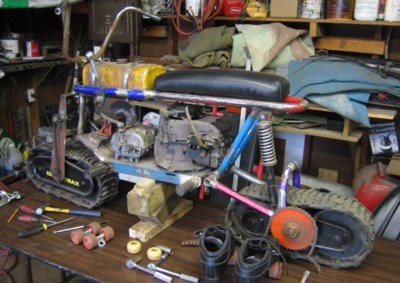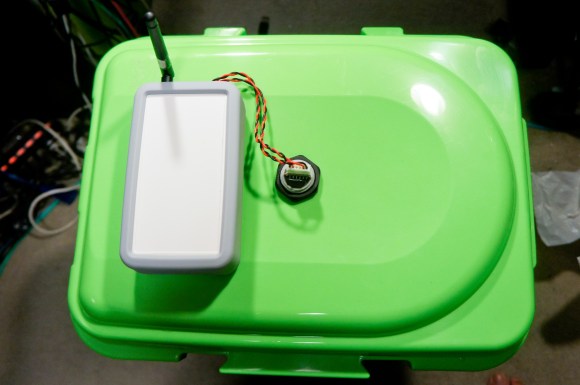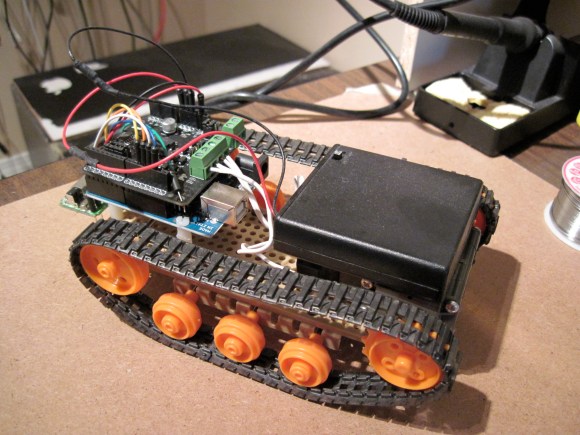If you’re building a robot for off-road or rough terrain, chances are you’ve thought about using a tank-tread style drive. There are a ton of kits available with plastic tread and wheels, but they are typically really expensive or pretty flimsy. Instead of going with an off-the-shelf solution, [Paul B] designed a heavy-duty tank tread made with common bike chain and conduit.
Some DIY tread designs we’ve featured just use a single bike chain on either side of the tread pieces. This gets the job done, but each section of tread is usually bolted through the chain. This means that you can’t use a sprocket to drive the chain since all the bolt heads block where the teeth engage. Instead, these designs typically use drive wheels inside the tread, which are prone to slip under a heavy load. [Paul B]’s design is a bit different: it uses a DIY double-wide chain so he can bolt tread segments to the chain and still use a drive sprocket.
Constructing the double-wide chain took quite a bit of work. [Paul B] completely disassembled a couple of bike chains with a delinker tool and then reassembled the chain in a double-wide configuration with M3 bolts instead of the original chain pins. Each section of tread (made out of cut pieces of plastic conduit) bolts on the outside section of chain, and a sprocket runs on the inside. His DIY chain approach saves him money too, since double-wide chains are pretty expensive. Since his sprockets directly engage the drive train, his design should be able to handle as much torque as his drivetrain can put out.








 We then tour the R&D facility where new tank materials and components are developed and tested. It is here that the drive gears are put through their paces on a torsion machine. Air cleaners are pitted against each other to decide which can filter out the finest dust and sand. After careful analysis, different tank shell materials are test welded together with various, well-documented electrodes, and these panels are taken outside so their welds can be directly fired upon.
We then tour the R&D facility where new tank materials and components are developed and tested. It is here that the drive gears are put through their paces on a torsion machine. Air cleaners are pitted against each other to decide which can filter out the finest dust and sand. After careful analysis, different tank shell materials are test welded together with various, well-documented electrodes, and these panels are taken outside so their welds can be directly fired upon.










